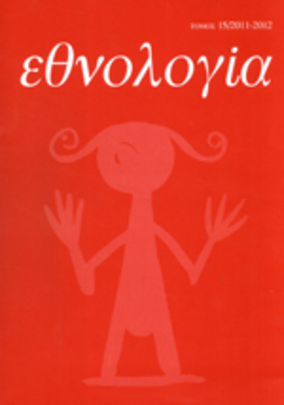Η ιστορική διάσταση στην ανθρωπολογική προσέγγιση της θρησκείας
Part of : Εθνολογία : περιοδική έκδοση της Ελληνικής Εταιρείας Εθνολογίας ; Vol.2, No.1, 1993, pages 261-277
Issue:
Pages:
261-277
Parallel Title:
The historical dimension of the anthropological approach to religion
Author:
Abstract:
This paper is a brief presentation of the anthropological approach to the topic of religion. It starts with the assumption that the study of religion constitutes part of the study of ideology, within a theoretical framework that views ideology simultaneously as a symbolic system and as a system of symbolic practice. Anthropological analysis has brought to light a number of essential aspects of what constitutes religion. 1. Religion as cosmology, i.e. as a world view and associated explanations. 2. Religion as a means for the expression and reproduction of social organization and the relations of hierarchy within it. 3. Religion as a moral system in what concerns behavioral patterns and role expectations. 4. Religion as shaping social reality in the sense of working as both interpretation of experience and commitment to a certain orientation of action. 5. Religion as the provocation of strong emotions, through ritual, and hence the establishment of its obligatory character. In recent years, the shift of interest to world religions (Christianity, Islam, Buddhism, Hinduism, Judaism), and in particular in the Mediterranean basin, has introduced historical analysis in the anthropological approach to religion in two ways: 1. by the study of the socio-historical context of religion in particular cultural settings. In Mediterranean Europe, Christianity has played a major role in the juro- political realm and the process of centralisation of power up until the development of capitalism and the interrelated emergence of Protestantism.2. by the elaboration of the analytic model of the Great and Little Tradition, which, in spite of an initial tendency to misleading oversimplifications, allows us to capture the time dimension of religion. The Great and the Little Tradition, when viewed not as distinct spheres in actuality, but rather as an analytic distinction, provide a framework for the study of the processes of perpetual merging of universalistic and particularistic religious features in any given socio-cultural setting. In the course of History, Christianity has spread over a wide geographical area. Its spread has been characterised by constant re-elaboration of the Great Tradition as, at each new socio-cultural setting, it has merged with local symbolic meanings and practices and has consequently manifested a new form that accommodates together some of its initial and some of the local features. Hence, we have a series of inclusive phases, where the Great Tradition is perpetually under a process of fusion. In that sense, the Great Tradition can be viewed as separate only analytically, vis à vis a particular Little Tradition with which it is currently under the process of fusion to produce the practised religion of a given community. The analytic model of the Great and the Little Tradition captures an important part of the re-elaboration of religion, both in its diachronic and its synchronic dimensions.
Subject (LC):
Notes:
Περιέχει βιβλιογραφία




